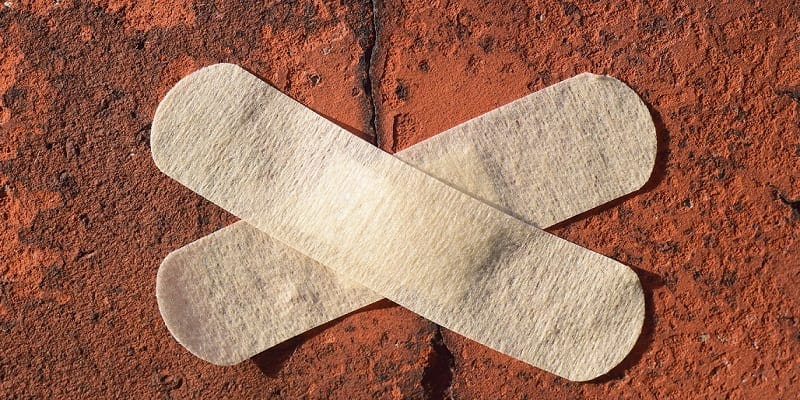
by Chris Linder, Director, MCVP
This morning, as with most mornings, I opened my New York Times email to skim the headlines. I saw the headline, Missing Girl Is Rescued After Using Hand Signal From TikTok and sighed. Here we go again, I thought. Another story about how if girls just knew the right things to do, they could save themselves from another person’s violence. I read on, hoping I was wrong. I was not.
Like so many people engaged in anti-violence work, I’m so tired of the gimmicks and the quick fixes for the violence that plagues our culture. We are so easily distracted by the quick fixes – the rape whistles, the nail polish that changes colors when a “date rape drug” is present, the hand signals – anything to keep us from talking about the hard and nuanced stuff of power, oppression, privilege, and dominance.
Most recently, the case of the girl in Kentucky “rescued” when she knew the right hand signal to use and the right person at the right time saw it has captured the attention of our nation. I’m frustrated by our collective fascination with these stories. So many factors contribute to our need for a good story about “saving a girl.” When we can see a story about a “good girl” who is “saved” by doing the “right things,” we can let ourselves off the hook for the more complicated, nuanced stories among us every day. The girl is a minor – we know nothing about her, which means that we can make up our own story about who she is. Which means that many people subconsciously go to a place of innocence and purity, making her a girl worth saving. In other stories of violence and abuse, we know more about the victim – the imperfect victims among us every day, and we make up all kinds of reasons why they are not worth saving.
The most recent story of a “girl worth saving” illustrates two primary problems that make addressing violence in our culture so challenging: focusing on the “perfect” victim and placing responsibility for ending violence on everyone except for perpetrators. And don’t even get me started on the fact that someone is “rescuing” her (as most headlines I’ve read indicate), rather than her exercising agency to do what she needs to do to get herself safe, like so many of us do instinctively!
Let me be very clear: I am grateful that someone saw the girl’s cry for help and took her seriously. I AM GLAD SHE IS SAFE, like all people deserve to be, which is why I challenge us to engage in more complex and nuanced conversations.
On “perfect” victims…
As a culture, we refuse to have the hard conversations about what it would take to actually end violence: addressing power and oppression, and not just sexism. Sexual violence and abuse are wound with ALL forms of oppression – namely, racism, colonialism, classism, ableism, homophobia, transphobia, AND sexism. Perpetrators target people with minoritized identities at even higher rates than dominant groups. In simple terms, this means that women of color, people with disabilities, and queer and trans people experience extremely high rates of violence, and that violence is as a result of the compounding intersections of oppression. It is NOT because people with minoritized identities are “at risk” or do things to cause their victimization – it is because of oppression.
The U.S. was founded on domination, on colonization, on taking away Indigenous peoples’ bodily autonomy, identities, and land. Further, white ruling class men (and therefore white women) in the U.S. got rich off of exploiting Black people’s bodies, including their sexuality. Forcing enslaved people to reproduce only strengthened the free labor supply white men (and therefore white women) benefitted from and contributed to establishing norms of dominance and control on which the U.S. was founded. The U.S. was established by the execution of violence, and that violence and domination lives on in most everything we do, usually unquestioned.
Further, perpetrators target people with minoritized identities because they know they can get away with it because dominant U.S. culture does not value people with minoritized identities in the same way we value pretty, white, non-disabled, cisgender, straight women who look like how victims are “supposed to look.”
In cases like the most recent one of a girl who was “rescued” after using a hand signal she learned on TikTok, we know nothing about this girl. Chances are she is a white girl because her plea for help was seen as legitimate by a bystander and taken seriously. The videos shared in all of the stories I’ve seen about this hand signal definitely represent the “perfect” victim – the woman teaching the signal has long, straight, blond hair and appears to be traditionally “pretty.” It is easy for us to construct her as what “victims” look like – straight, cisgender, and likely non-disabled girls and women. This perfect victim narrative is blatant, and yet, so many of us are clueless about how this construction influences our understanding of violence.
We’re certainly not the first to say this, and yet, we’ll say it again: the missing white women syndrome has GOT to stop. I know that everyone points to the amorphous “media” when discussing this, and yet, here I am, doing it again. The media’s (and our culture’s) fascination with girls worth saving – the Gabby Petitos, Lauren McCluskeys, and this unnamed girl in Kentucky – must be examined. Let me be clear: these women and girls matter. Their lives are worth saving and their stories worth telling. That said, SO ARE ALL OF THE OTHER ONES!
Indigenous women have been organizing for decades now around issues of missing and murdered Indigenous women (#MMIW), calling attention to the thousands of missing Indegenous women who get virtually no attention in mainstream media. Similarly, Black women organizers, including Tarana Burke, who started the #MeToo movement, have been building movements for Black girls’ and women’s healing from violence for centuries. And guess what? The coverage and awareness of these stories is fleeting – we might hear a few blips about the MMIW movement toward the end of the Gabby Petito coverage because the case happened in Wyoming, in which a large number of MMIW activists live and work. Tarana Burke has a new, nuanced, complicated, moving book out, and I have not heard a peep about it from mainstream media outlets. I have heard and seen coverage of Anita Hill’s new book about gender-based violence, and I can’t help but wonder what it is that makes Hill’s story more palpable than Burke’s? How and why do we prioritize some stories over others? And what will it take for us to move beyond the simplistic, perfect victim narrative? How can we, as a collective, value all survivors’ stories and experiences? As long as we keep our focus on the simple, constructed “perfect victim” stories, we will never address the root of violence.
On responsibility…
Why does it take a hand signal for us to see violence? Violence is around us. Every. Single. Day.
Some people have been crying out for centuries about the violence they experience, and yet, our collective culture does not take it seriously. We only take it seriously when the victim narrative we construct matches the victim narrative we deem worthy of saving, AND when we deem that victims knew and did the “right” thing to be saved.
These “right things” most often put the responsibility on a victim and/or bystander for addressing the issue. Things like rape whistles, hand signals, and other quick fixes perpetuate the narrative that perpetrators cannot be stopped – that it is potential victims’ responsibility to prevent themselves from being hurt. And that when we are not able to prevent ourselves from being hurt, it’s because we didn’t know the right hand signal, or the right way to call for help, rather than because someone is hurting us. While yes, I’m glad that in this example, the hand signal worked, I am worried about what it means when we expect people to know a secret language to be protected from violence.
The reality is, perpetrators of violence are among us in all of our circles. They are “good people” who we would “never think of as perpetrators.” We protect them daily by failing to address power, oppression, and violence in all of its forms. We protect them daily by ignoring casual boundary violations, by not taking it seriously when people share that someone we love has hurt them.
We don’t have to let it get this far. When a person we claim to love begins to show signs of causing harm to others in the form of violating boundaries, using vulgarity to talk about people, or just not caring how other people experience the world, we can intervene. We can point out to them how their behaviors impact other people; we can let them know that we are watching and that their behavior or language is not ok with us. We have the power and responsibility to directly intervene with people causing harm, not just to remove the people being harmed from the situation.
Thank you to Ashley Yong and Jessie Richards for their early morning and quick processing sessions to make sense of this issue. I am grateful for your collegiality and thoughtfulness.
If you want to get involved in helping to address issues of dating and sexual violence, please consider joining our research team focused on oppression and violence or one of our working groups.
 Chris Linder is an Associate Professor of Educational Leadership and Policy and Director of the McCluskey Center for Violence Prevention at the University of Utah.
Chris Linder is an Associate Professor of Educational Leadership and Policy and Director of the McCluskey Center for Violence Prevention at the University of Utah.
